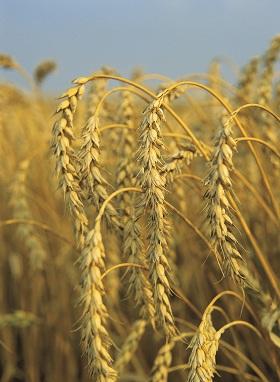The state of smart cities in MENA
11 December 2025
Published online 28 March 2013

Wheat is one of the most important and widely cultivated food crops, providing about 20% of the calories consumed by humans worldwide. This is, in large part, due to the crop's ability to adapt to a wide range of climates, and to the quality of its grains, which are ideal for baker's flour. Yet, many wheat species are polyploid and have extremely large and complex genomes, making genetic and functional analyses difficult.
A large international team of researchers led by Jun Wang of BGI Schenzen in China and King Abdulaziz University in Saudi Arabia has now sequenced the genomes of two progenitor species that had important roles in the evolution of modern wheat. Their findings, published in two back-to-back papers in Nature 12 give insights into the environmental adaptations and agronomically important traits of the crop, and provide a resource for research into how it could be genetically improved.
Common bread wheat, Triticum aestivum, has six sets of chromosomes. It originated in the Fertile Crescent some 8,000 years ago, by spontaneous crossing of the wild grass Aegilops tauschii, which has two sets of chromosomes, with the cultivated wheat T. turgidum, which has four sets of chromosomes.
Wang and his colleagues used state-of-the-art DNA sequencing technology to generate draft genomes for Ae. tauschii and the wild einkorn wheat T. urartu, which is the progenitor species of the A genome, a basic genome of bread wheat.
The Ae. tauschii genome contains 43,150 protein-coding genes. There is a significant expansion of the gene families responsible for disease resistance, abiotic stress tolerance and grain quality, compared to other staple crops such as rice, sorghum and maize. Furthermore, the data predicts the presence of genes encoding 159 previously unknown microRNAs, some of which may contribute to the ability of bread wheat to grow in low-nutrient soils.
In T. urartu, a total of 34,879 protein-coding genes were predicted. Its genome also has a slight expansion of the genes associated with disease resistance — containing nearly 600 such genes, compared to 460 in rice and just 106 in maize.
In comparison with the common grass species Brachypodium distachyon, the T. urartu genome is significantly larger. However, the authors found that this was mostly due to the sequences separating individual genes being larger in T. urartu, with a negligible contribution from the slight increase in the number of genes.
Wang and colleagues also found that much of both genomes consist of transposable elements, or 'jumping genes'. This suggests that the expansion of its genome occurred relatively recently, during a period of abrupt climate change 3–4 million years ago in the Pliocence epoch.
"These genomes are still fragmented drafts, so we are trying to improve them, and we are also carrying out a comprehensive comparison between them," says Wang, adding that the new findings could help breeders produce better strains of wheat.
doi:10.1038/nmiddleeast.2013.44
Stay connected: